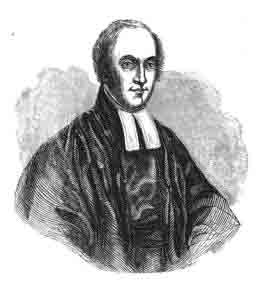
The “sensible” John Pemberton Plumptre (J.P.P.) married Catherine Matilda Methuen, a daughter of Paul Cobb Methuen of Corsham House, Wilts, in 1818 and inherited Fredville and the other family property on the death of his father. He followed the family tradition of entering politics and was the Member of Parliament for East Kent from 1832 to 1852. J.P.P. was initially a Whig (Liberal) and known as “an unflinching Reformer” but prior to the 1837 election he allied with the Tories (Conservatives). This caused some considerable anger amongst his former political friends and occasioned some amusing election ‘squibs’ (satirical verses) during the election campaign in which a Mr. Rider from West Kent stood as a Liberal against him. During the election contest a ‘squib’ was penned in the form of a parody on the song, “Oh where, and oh where, is your Highland Laddie gone?” where the words, “Jockey Rider” were substitute throughout for “Highland Laddie”, and the verse, “In what clothes, in what clothes, is your Highland Laddie clad?”, became:
“In what clothes, in what clothes, is your Jockey Rider clad?
He’s clad all o’er in Blue — but that Blue is very bad;
For it’s all second-hand, being what J. P. Plumptre had!”
Confusingly, blue was the Liberal colour in Kent at that time.
J.P.P. and Catherine had a family of three daughters, the eldest of whom died at a young age and in 1850 J.P.P. and his wife published a book, “The Flower of Spring” in her memory. Shortly afterwards, in 1852, he stood down as an M.P. and lived as a country gentleman.
The 1851 census recorded J.P.P. as “Magistrate, Deputy Lieutenant and Farmer of about 800 acres employing 42 labourers”, and as having fourteen domestic staff living in to look after a household which included his widowed mother and three of his spinster sisters. Ten years later in 1861 the census recorded ten living in servants to look after J.P.P. and his wife.
J.P.P died in 1864 and the absence of a male heir meant that Fredville and other property was inherited by his nephew, Charles John Plumptre, the eldest son of his brother, the Reverend Charles Plumptre.
As well as being land-owners, the Plumptres and the Hammonds of St. Alban’s Court were partners in Plumtre, Hammond & Co., a Canterbury bank, from at least 1824, but by 1830 the bank had become Hammond & Co., the partners then being: William Osmond Hammond, John Plumptree, Deane John Parker and John Furley ……Glyn & Co.
In 1845- The Bankers Magazine recorded that Hammond & Company’s partners were:-William Osmund Hammond, of St. Alban’s Court, Nonington,Kent; John Pemberton Plumptre, of Fredville, Nonington, and M.P. for Kent; John Furley, of Canterbury, who had replaced the late William Foord Hinton; and William Henry Furley, of ,Canterbury.
A decade later in 1850 the banks partners were listed as: William Osmond Hammond, St. Alban’s Court,Nonington,Kent, Esquire; John Pemberton Plumptre, Fredville, Nonington, Esquire; William Henry Furley, Canterbury, Esquire; Thomas Hilton, Nackington House, near Canterbury, Esquire; and John Furley, Jun.,Canterbury, Esquire.
By the late 1880′s Hammond & Co’s. Canterbury Bank premises were at 51, High Street. with manager’s, George Furley and McMaster and these premises are the present Lloyds Bank building on the corner of the High Street and St. Margaret’s Street.
The 1901 census lists Charles J. Plumptre of Fredville and William O. Hammond of St. Alban’s Court as partners in a bank and the 1903 Kelly’s Directory for Kent, the Canterbury section records: “There are three banks , viz.: the Canterbury bank, carried on under the firm of Hammond, Plumptre, Hilton, McMaster & Furley, and branches of the London and County Banking Company and Lloyds Bank.”
The bank appears to have been taken over between 1903 and 1913 as it does not appear in Kelly’s 1913 directory.



